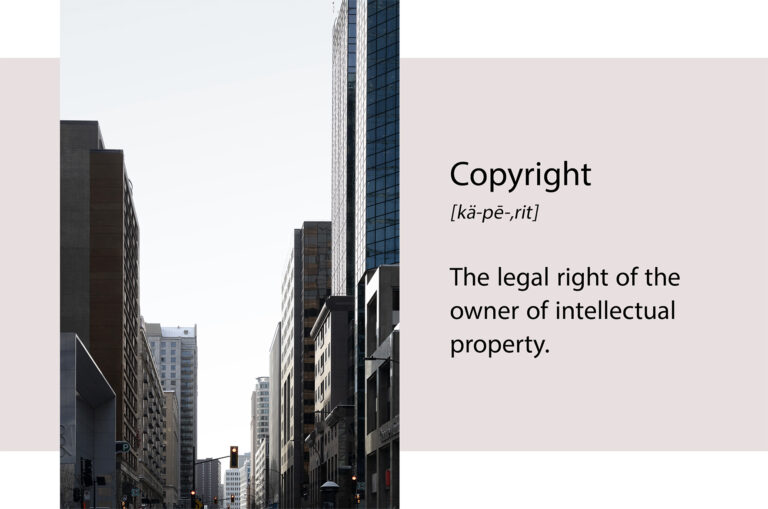Let’s talk about Copyright in Photography! The concept of Copyright in Photography often pops up unexpectedly, leaving clients puzzled. Imagine this: you, as a designer or architect, get a message from your photographer saying, “Hey, you’ll need to renew the copyright term on these photos in about 10 years.” And suddenly, you’re like, “Wait, what?” That’s enough to make your nice relationship with the client more complex.
Believe me, I get it. Copyright can be confusing. When I moved to Canada, I had to get my head around it too—especially since, where I’m from, copyright laws don’t apply in the same way to media or products. Here, though, Copyright in Photography is the name of the game! Understanding Copyright in Photography makes a lot more sense once you break it down. So, let’s break it down and dive into the basics of copyright in commercial photography and why it matters.

Copyright: Let’s Talk in Music Terms
To make it easy, let’s take a detour into music since it’s something we all relate to. In this scenario you just updated the playlist with the latest trending album on your phone. Here’s where things can get tricky—so let’s bring in an imaginary assistant for a little Q&A!
- Assistant: “So, do you actually own this music now?”
- You: “Uh, no. I just have permission to listen to it.”
- Assistant: “Can you at least download it onto your device?”
- You: “Well, maybe— that depends on my subscription terms.”
- Assistant: “So, can you share it with friends?”
- You: “Yes and no. I can play it out loud at a party, but I’m not supposed to share the actual files or my subscription with others. If they want to listen to it themselves, they need their own account!”
So, how does copyright in photography?
Just like music, Copyright in Photography operates in a similar way. When you pay for a photo session, you’re actually paying for the photographer’s skills and creativity (that “creative fee” you’ll see on quotes). But when it comes to actually using the photos, you’re interacting with Copyright in Photography—a license that grants you specific rights for using those images on your website, social media, in print, etc. Think of it like a playlist you can play within certain settings.
How you use those images depends on the licensing agreement you have with your photographer. For example, here at Nimkat, we grant permission for our photos to be used in the client’s printed or digital publications, website, social media channels, portfolios, annual reports, and all that good stuff. Need full ownership? That’s usually possible too, but it’s like upgrading your subscription levels—expect a bit of a price bump.
A Little Friendly Talk
With the rise of social media, I’ve seen clients pass photos of their [residential] projects to the homeowners. Sounds nice, right? The homeowner then posts the photos on Instagram or Facebook. Here’s the kicker: even with the best intentions, that’s technically copyright infringement. Similarly, sending photos to other companies or contractors without permission constitutes a breach of Copyright in Photography unless it’s explicitly agreed upon. Copyright in Photography is a bit like a subscription plan—it has its limits!
Wrapping it Up
So there you have it! Copyright in Photography might feel a little weird or tricky at first, but it’s an integral part of commercial photography. and including it in your marketing budget will save you a lot of questions down the road. You might think, “Is this really worth writing about?” Trust me, I get that. But you’d be surprised—so many people overlook copyright in their day-to-day business, and it can lead to issues down the line.
So here’s to making copyright a little less intimidating. Who knew it could actually be kind of fun to talk about, right?
